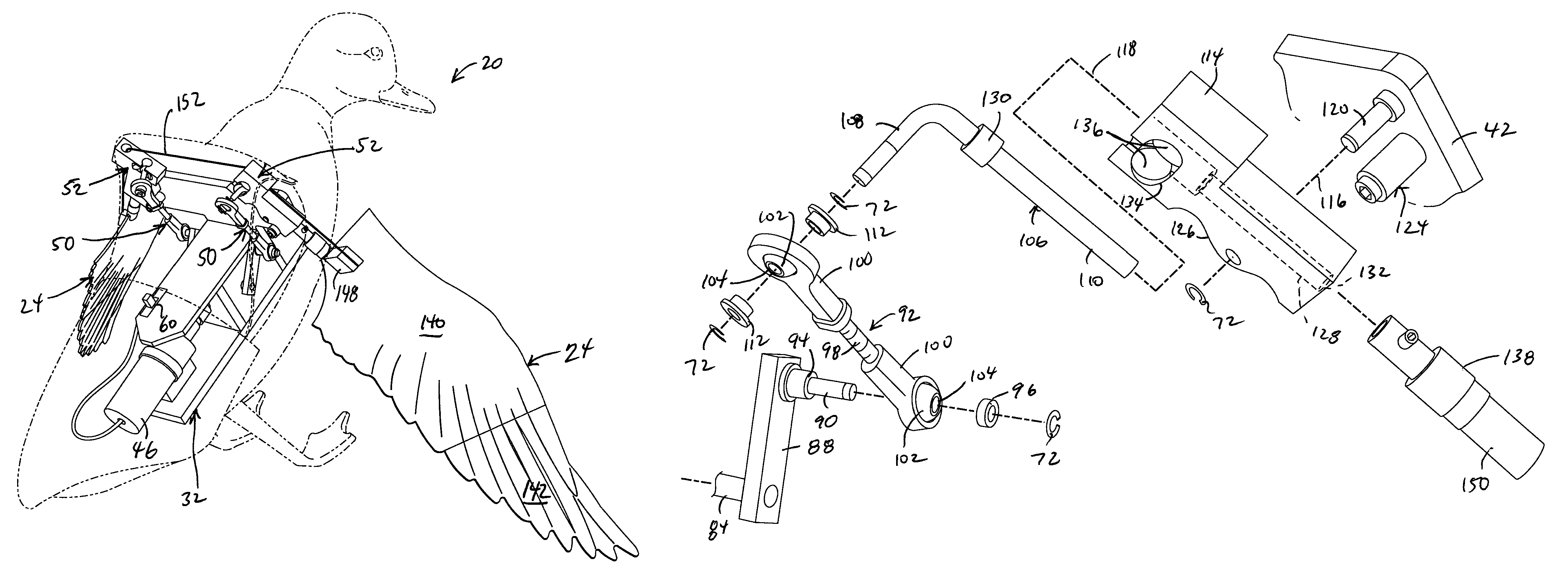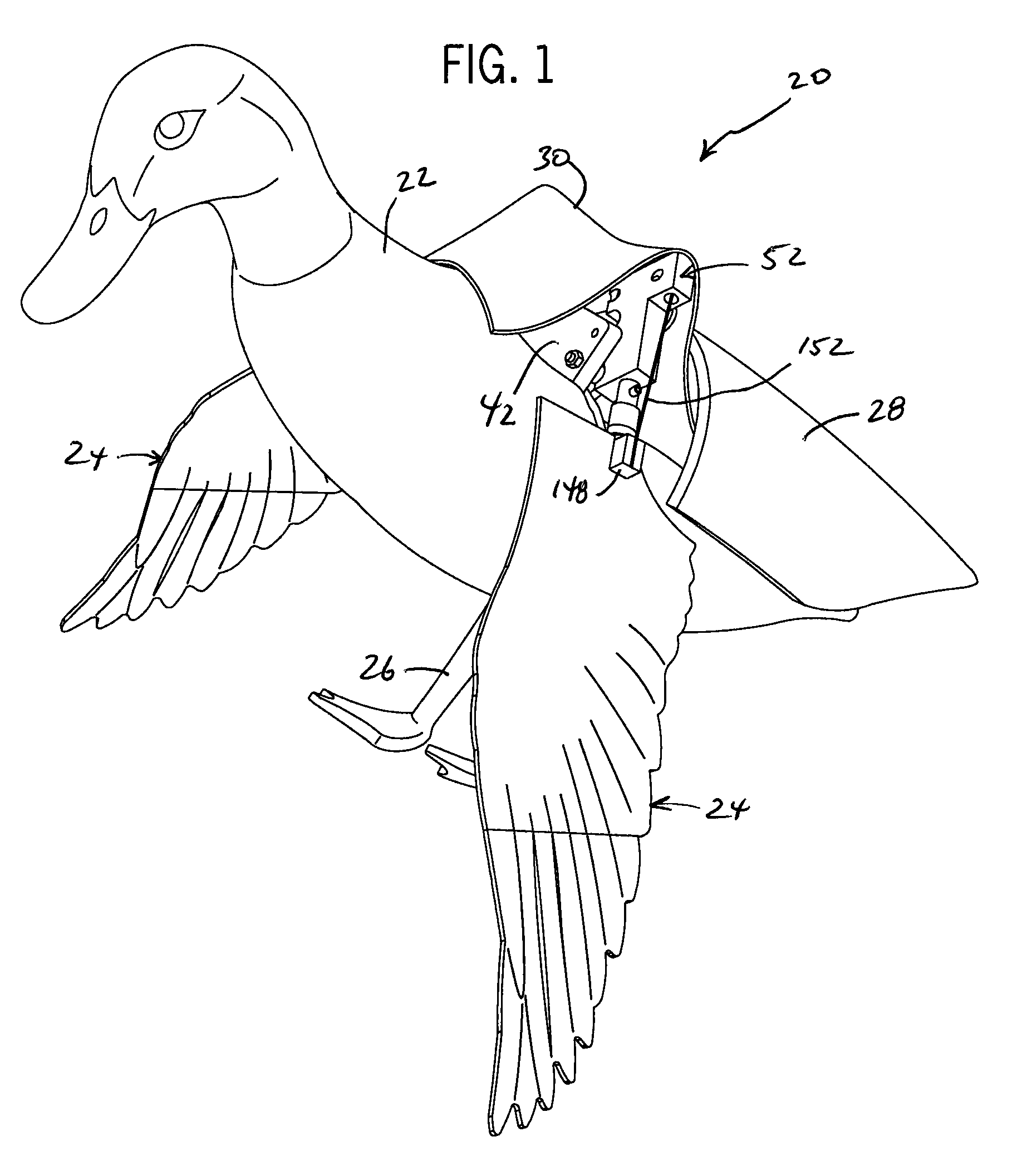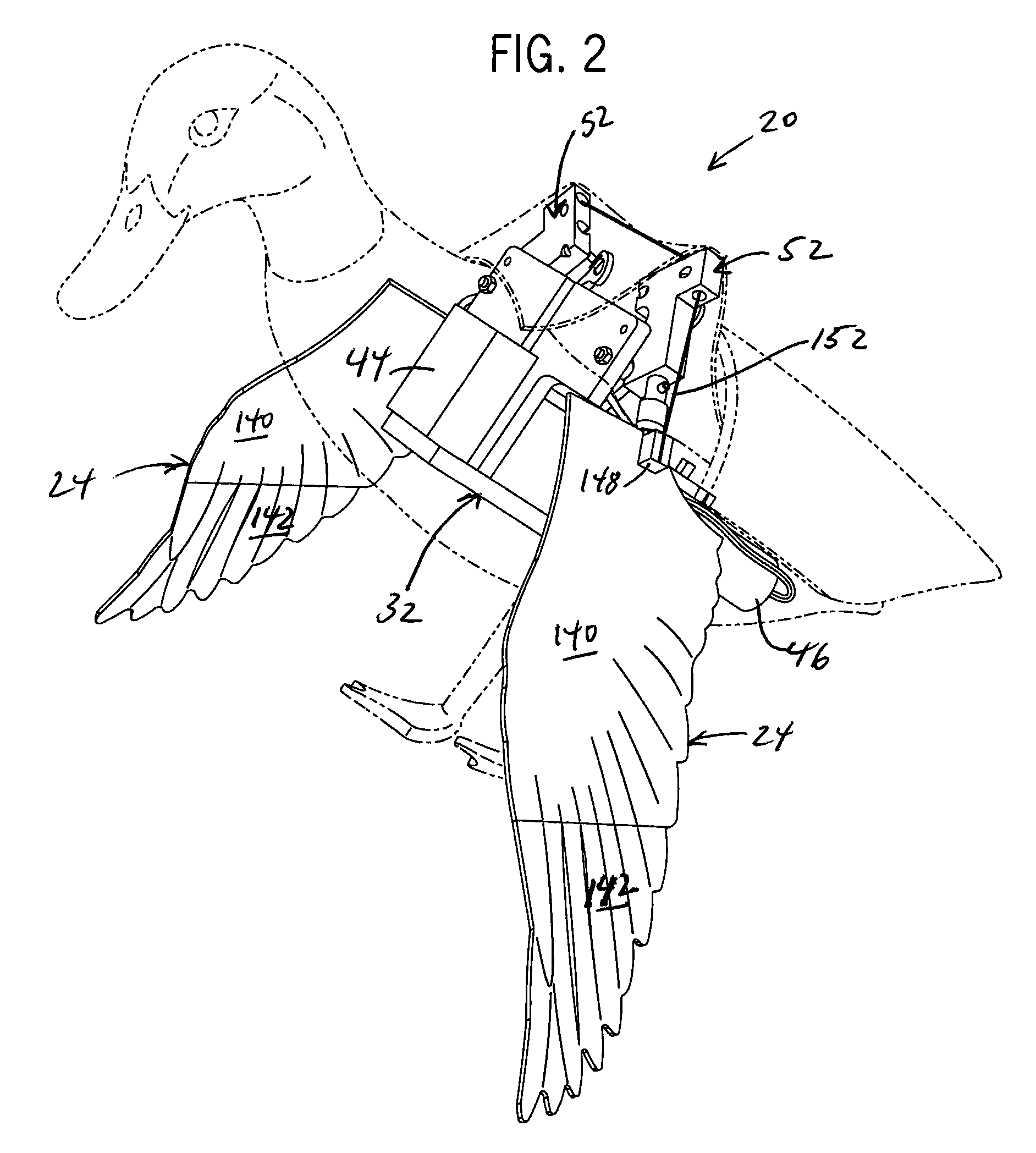Motion decoy with biaxial wing beat
a motion decoy and biaxial technology, applied in the field of gaming decoys, can solve the problems of lack of realism of compound movements of existing motion decoys, general unrealistic wings with plain coloring, and inability to present realistic wing beat motions
- Summary
- Abstract
- Description
- Claims
- Application Information
AI Technical Summary
Benefits of technology
Problems solved by technology
Method used
Image
Examples
Embodiment Construction
[0036]The following describes one or more example constructions of a motion decoy 20, as shown in the accompanying figures of the drawings described briefly above. Various modifications to the example constructions may be contemplated by one of skill in the art. For example, the motion decoy 20 is shown in the drawings as having a body 22, wings 24 and legs 26 that are in the general form of a duck. These features can be formed to resemble a specific type or breed of duck, both in configuration and in the surface ornamentation or augmentation applied to these features, including decals, printing or flocking. Furthermore, the motion decoy 20 is not limited to ducks. While some modifications may be necessary to the mechanisms and components described to accommodate for size and weight differences of various waterfowl, the principles and mechanisms disclosed herein can be incorporated into a motion decoy for any type of the over 60 species in the waterfowl group, including any type or ...
PUM
 Login to View More
Login to View More Abstract
Description
Claims
Application Information
 Login to View More
Login to View More - R&D
- Intellectual Property
- Life Sciences
- Materials
- Tech Scout
- Unparalleled Data Quality
- Higher Quality Content
- 60% Fewer Hallucinations
Browse by: Latest US Patents, China's latest patents, Technical Efficacy Thesaurus, Application Domain, Technology Topic, Popular Technical Reports.
© 2025 PatSnap. All rights reserved.Legal|Privacy policy|Modern Slavery Act Transparency Statement|Sitemap|About US| Contact US: help@patsnap.com



